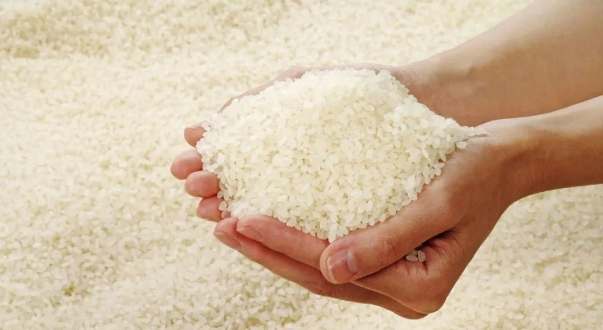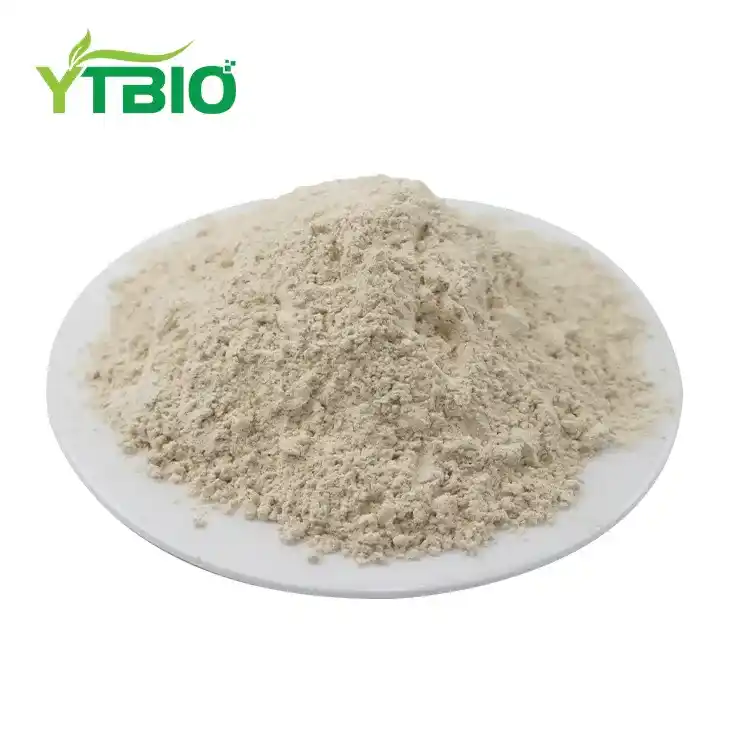Pure Rice protein powder
Product Name: Rice Protein Powder
Appearance:Fine Light Yellow Powder
Odor:Characteristic
Identification:Complied to Standard
Particle Size:100 mesh ,300 mesh,600mesh
Moisture:≤ 8.0 %
Ash: ≤ 10 %
Fat content (dry basis):≤ 8.0 %
Storage conditions: This product should be sealed and shaded, stored in a dry
Certifications:ISO9001,ISO22000,Kosher,Halal,HACCP
Shipping speed:1-3 days
- Fast Delievery
- Quality Assurance
- 24/7 Customer Service
Product Introduction
What is rice protein?
Pure Rice protein powder is mainly composed of four proteins: albumin, globulin, alcohol-soluble protein and glutenin. Rice residue is mainly endosperm protein, which is composed of albumin (4% ~ 9%), salt-soluble globulin (10% ~11%), alcohol-soluble gluten (3%) and alkali-soluble gluten (66% ~ 78%). Among cereal proteins, the biological value (B.V.) and protein value (P.V.) of rice protein are both higher than other proteins. Rice protein has a reasonable balance of amino acid composition and high amino acid content, which is unmatched by other plant proteins. Rice protein is recognized as the best among plant proteins and conforms to the ideal model recommended by WHO/FAO.
Rice protein accounts for about 8% of the total weight. According to different solubility, it can be divided into four categories: albumin, globulin, gliadin, and glutenin. Gluten and alcohol proteins, also known as storage proteins, are the main components of rice protein; albumin and globulin have lower contents and are physiologically active proteins in rice. Rice protein has unique high biological potency and hypoallergenicity. The hydrolyzed peptides have the effects of lowering blood pressure and cholesterol. Therefore, it is widely used in infant food, food additives, and functional foods. At present, rice protein extraction methods are mainly divided into alkali extraction and acid precipitation methods, enzymatic methods, Osborne classification methods and physical assisted methods.

Composition and structure of rice protein
Rice (Rice) is a finished product made from rice after cleaning, hulling, milling, finishing and other processes. Rice contains nearly 64% of the nutrients in rice and more than 90% of the nutrients needed by the human body; at the same time, rice is also The staple food of the people in most parts of China. The seeds produced by rice are actually rice. After the rice husk is removed, it is called brown rice. The brown rice can be obtained by grinding off the bran layer.
Pure Rice protein powder is produced by soaking, grinding, reacting, extracting, drying and other processes of rice; it is mainly composed of four proteins: albumin, globulin, alcohol-soluble protein and glutenin, each accounting for 5%. , 12%, 3% and 80%. Among them, gluten and globulin are the main components. Globulin and albumin are physiologically active proteins in rice endosperm. There are many types, with relative molecular masses of 10-200KDa and 16-130KDa. Prolamin and glutenin are storage proteins in rice. Although the content of gliadin is not high, it is closely related to the morphology of endosperm protein bodies.
Rice protein mainly exists in the form of two protein bodies (PB), namely PB-I and PB-II. Electron microscopy observation shows that the PB-I protein body has a lamellar structure, with a dense particle diameter of 0.5-2 μm, and gliadin is present in PB-I; while PB-II has an ellipsoidal shape, no layering, uniform texture, and particles The diameter is about 4 μm, its peripheral membrane is not obvious, and gluten and globulin are present in PB-II. The two protein bodies often exist together.

Properties and nutritional value of rice protein
Functional properties include solubility, emulsification, foaming, water-holding, oil-holding, gelling, and flavor-binding properties. Among them, solubility often affects other functional properties such as thickening, foaming, emulsification and gelling. Studies have found that methods to increase the solubility of rice protein are beneficial to improving the emulsifying properties of rice protein; the emulsifying properties of rice protein are greatly affected by pH value. The emulsifying activity is lowest at pH=5, and then decreases as the pH increases. increase, which is consistent with its solubility change trend. In addition, related research has found that although rice protein extracted from rice bran has poorer foaming properties than casein, it has better emulsification properties and maintains stable emulsification in the presence of high levels of salt and sugar. performance.
Nutritional properties of natural rice protein:
Low antigenicity. Low antigenic activity is the prerequisite for protein nutrition to be efficiently utilized in the animal body. As we all know, many plant proteins contain anti-nutritional factors, such as trypsin inhibitors and flatulence factors in soybeans, and lectins in peanuts, which greatly limit their application in production. However, relevant research shows that rice protein has the characteristics of high nutrition, mildness and non-irritation, and low antigenic activity. It is a plant protein resource with great development potential. In addition, some animal protein raw materials contain anti-nutritional factors, such as lactoglobulin and some ovalbumin, which may cause allergic or toxic reactions in the animal body. However, rice protein does not contain similar allergenic factors, and its application is safe and reliable.
As the protein with the highest biological value among all grains, rice protein is a hypoallergenic plant protein. Its digestibility, biological value and net protein utilization rate in young children are 88.8%, 90% and 79.9% respectively, so it is suitable for use in children. Used in food for infants, young children and middle-aged and elderly people.
Balanced amino acid composition. The protein content of rice protein is as high as 40%-70%, and its absorption and utilization efficiency in the animal body is high. Its biological potency is as high as 77, and its nutritional value is much higher than that of plant-based proteins such as corn and wheat. The amino acid composition of rice protein is balanced and rich in various essential amino acids required by the body, which is very close to the ideal model recommended by WHO/FAO (1973). Through analysis of its components, researchers found that rice protein has a high lysine content and contains more than 80% alkali-soluble glutenin.
Why is rice protein called high-quality protein?
Rice protein has 18 kinds of amino acids and is rich in essential amino acids. The content of the first limiting amino acid lysine is higher than that of other cereal proteins. The amino acid composition pattern is close to the WTO/FAO recommended pattern, and it is easy to be digested and absorbed by the human body.
Rice protein isolate has antihypertensive and cholesterol-lowering effects on the expression of cyp4a and cyp2c in the kidneys of young mice, which can improve arachidonic acid metabolism and can be used as an antihypertensive ingredient. Preventing Chronic Diseases Proper and nutritious diet can prevent some diseases, such as heart disease and cancer. and other nutritional benefits.
Compared with other cereal proteins, rice protein has higher biological value (BV) and protein utilization rate (PER). The biological value can be as high as 77, and the protein utilization rate is 1.38%-2.56%, ranking first among various grains.
Advantages of YTBIO rice protein
100% non-GMO
Hypoallergenic, the only food free of allergen testing
Rice protein amino acid ratio is reasonable
Rice protein is easy to digest and absorb, with a high utilization rate
Compared with animal source protein and whey protein, it is low in sulfur-containing amino acids and has no lactose irritation.

Rice protein application areas
1. Rice protein bioactive peptides
An active peptide called oryzatensin was isolated and purified from trypsin hydrolyzate of rice albumin. Its amino acid sequence is Gly–Tyr–Rro–Met–Tyr–Pro–Leu–Pro–Arg. It has the ability to cause ileum contraction in guinea pigs and is resistant to morphine. and immunomodulatory activity. Rice protein contains a large number of hydrophobic amino acids. When enzymatically digested by a suitable protease at a specific site, a peptide fragment containing a hydrophobic amino acid at the C-terminus will be obtained, namely an active peptide fragment of ACE (angiotensin-converting enzyme angiotensin-converting enzyme). While ACE inhibitors are a major drug for the treatment of hypertension, rice proteolytic active peptides are highly safe and have no side effects.
2. Nutritional supplements
For infants with sensitive diarrhea, rice protein is widely used to develop high-protein, hypoallergenic infant formula rice noodles due to its low antigenicity and high nutritional value. Rice protein is gluten-free and suitable for people with wheat intolerance, allergies or celiac disease. Rice protein concentrate can also be used as a food supplement for patients with reduced normal protein intake or damaged protein digestion function to maintain nitrogen balance; it can also be used as an osmotic diuretic, peptic ulcer, and auxiliary treatment for trauma.
3. Food additives
Treating rice bran protein with enzymes has significantly improved its solubility, foaming, and emulsifying properties. In particular, endoproteases and exoproteases are used to moderately hydrolyze and deaminate rice bran proteins to obtain peptide chains with moderate length and function. Characteristic protein hydrolyzate can increase the solubility of rice bran protein and improve other functional properties. It can be used as food emulsifier, foaming agent and nutritional fortifier.
4. Edible film
The Southern Louisiana Research Center in the United States has developed an edible film with certain tensile strength and water vapor resistance using a combination of rice protein concentrate and pullulan, which can be used as a carrier for flavor substances and nutritional additives or for separation, protection and preservation. Isolator.
5. Rice protein feed
Rice starch by-products can be used as feed-grade rice protein powder. Its rich nutrients can help livestock and poultry resist disease and improve feed utilization. It is an excellent additive in the feed industry.
6. Plant-based products
Rice protein Powder can quickly replenish protein in the body. At the same time, it also has the characteristics of low sugar, low fat, zero cholesterol, and does not contain pigments and preservatives. It can regulate cholesterol metabolism, improve exercise indicators, enhance bone health, antioxidant, and many other aspects. All have outstanding performance and are therefore widely used in plant-based products.
Certificates
YTBIO is committed to providing customers with the highest-quality Pure Rice protein bulk and services so that every consumer can enjoy natural, healthy, and high-quality food. If you have any inquiries or needs about our products, please feel free to contact us, and we will reply to you as soon as possible.

Package & Shipment

Our Company and Factory

Hot tags:Pure Rice protein powder,Rice protein,Suppliers, Manufacturers, Factory, Buy, price, for sale, producer, free sample, OEM, ODM, private label, white label.



